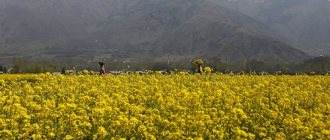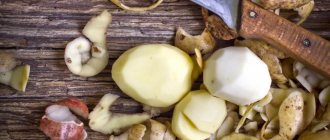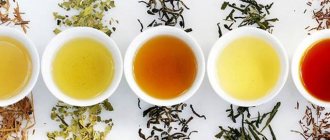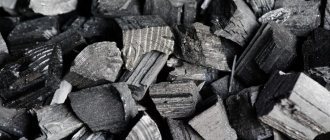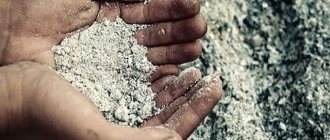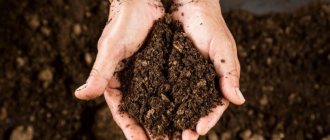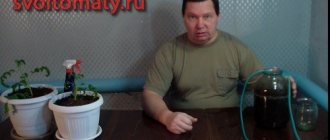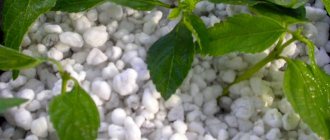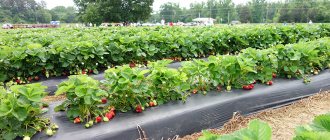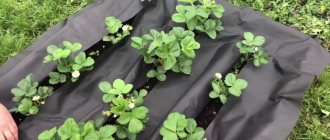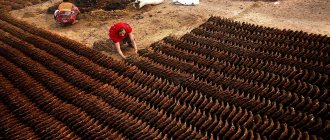Category: Organic fertilizers Reading time: 10 min · Views: 9,769
An excellent nutritional supplement is banana. This fruit contains a significant amount of components that are beneficial for plants. Bananas contain a lot of potassium, a component that helps crops actively develop and bloom luxuriantly. Banana peel as a fertilizer for indoor plants is a wonderful option for complete and healthy feeding.
Benefits of banana peel
In gardening stores you can see a wide variety of nutritional supplements. But natural products are always better than chemicals. Banana peel, used as fertilizer, has the following beneficial qualities:
- is a preventive measure against aphid invasion;
- contains potassium in its chemical composition, which diligently helps plants bloom beautifully, lushly and for a long time;
- phosphorus, which helps strengthen plant immunity and, accordingly, helps flowers actively develop and resist the attack of pathogens and infections;
- contains magnesium, a component essential for all plants that lack natural sunlight.
Fruit feeding helps saturate the soil with useful microelements, which are necessary for the normal growth and development of flowers, as well as the root system. In terms of its chemical composition and active properties, fruit fertilizer is not inferior to any complex mineral fertilizers and at the same time confidently remains a natural plant raw material.
Preparation of raw materials
You can make banana skins biologically inactive (while maintaining chemical activity in the form of mineral components) in the following ways:
- Roasting in the oven or microwave with minimal heating is the worst way. All by-product organic matter is destroyed, but a significant part of the by no means harmless products of its decomposition remains in the raw materials. When this method is systematically used, a harmful and smelly coating forms in the oven or stove chamber.
- Brewing like tea is the same as roasting.
- Drying on a radiator or windowsill (need to be covered with gauze from ants and flies) - most of the decomposition products of by-products evaporate, but during a sufficiently long process, rotting and fermentation of the raw material is possible.
- Freezing in the refrigerator freezer - the end result is similar to drying, only rotting/fermentation is excluded. But you can destroy the refrigerator: the volatile decomposition products of by-product organic matter that have become embedded in the plastic lining cannot be removed.
- Scalding with boiling water: after 1-1.5 hours, the infusion is drained; For further processing, the sour mass is used - growth stimulants remain in the finished fertilizer, but a certain proportion of proteolytic substances (which can damage the roots) is also retained. In addition, a significant part of the mineral components is lost.
- Drying in the open air in sunny weather - all mineral components and most of the growth stimulants remain, all other unnecessary organic matter evaporates without a trace. The skins, loosened into strips of 1-1.5 cm, are strung by the tails on a thread, like mushrooms, and dried in sunlight; A breeze is also desirable. The outside temperature is from 15 degrees, as long as it is not damp.
Disadvantages of banana feeding
Almost every fertilizer has its drawbacks. There are also disadvantages to banana feeding.
- If the peel of the fruit is located on the surface of the soil, then over time it begins to mold and emit an unpleasant odor.
- Banana food attracts ants and some other insects. Therefore, if flowers are fed with such a mixture, the risk of insects appearing on the plants increases.
- The infusion of the fruit has a specific smell.
Application of fruit fertilizer
Banana peels are often used by experienced gardeners who know that the fruit infusion helps plants bloom beautifully and stay strong and healthy. Moreover, banana feeding has a positive effect on the brightness of the inflorescences, and also significantly increases the duration of the flowering period.
The main nuances that need to be followed when using fruit feeding:
- Cacti should be fed with a nutrient mixture only in the summer season. When preparing the working solution, you need to add more water and less concentrated fruit substance. Too concentrated banana infusion can burn the root system of cacti.
- When organizing fruit nutrition for indoor plants, it is important to remember that not all flowers need abundant watering. If a plant variety requires low humidity, then it should be fertilized no earlier than until the soil in the pot is 1/3 dry. For flowers that love high humidity, you should also not overdo it with fruit feeding. Applying fertilizers too frequently can give the exact opposite result - the flower will become sluggish, stop blooming, and the root system will begin to rot.
- For flowers that need drip watering, constant feeding with banana fertilizer can be organized. But it is important to consider that to feed the plants it will be necessary to use a weakly concentrated solution. Therefore, when preparing a working infusion, you will need to add most of the water and less of the concentrated fruit mixture.
- When fertilizing periodically, you must always ensure that the soil in the pot is not too wet. If the soil is still wet, then the application of fertilizing must be postponed to a later date. Neglect of this rule can provoke rotting of the roots, and then the death of the flower.
When is the best time to use banana fertilizer?
Banana peel fertilizers are universal. They are good to use for home flowers of all types and sizes. It is recommended to add fruit mixtures to the soil during the period when the flowers begin to form buds. It is useful to use banana fertilizer in the spring, when plants awaken after winter rest and experience a shortage of necessary components.
Regular application of fruit fertilizer during the vegetative growth of the flower promotes lush and long-lasting flowering. Fertilizing has a positive effect on the development of the plant and its growth. Banana peel helps restore sick and weakened flowers and helps young plants take root better after transplantation.
Useful compost
Banana peels are an excellent component for a compost pile. Do not put cleaning items in a regular trash bin, but exclusively in compost! Once the organic matter has completely decomposed, you will have good soil for filling raised beds.
A nutritious substrate for bulbous plants can be prepared as follows: in winter, add finely chopped peels to garden soil, pour in a solution of the EM preparation (Baikal EM-1, etc.) and mix thoroughly. After 1-2 months, add banana peel and bio-fertilizer again. In spring you will receive nutritious soil that is ideal for growing bulbous plants.
In the garden and vegetable garden, use only peels that have been well washed in warm water (without stickers, of course). Otherwise, unsafe chemicals that were used to treat fruits during their growth and ripening may enter the soil.
Methods for preparing banana fertilizer
There are several ways to prepare healthy supplements based on this fruit. In any case, banana peels, as fertilizer for indoor flowers, will have beneficial and nutritional properties.
Mixture of soil + banana peel
Before planting the flower in a pot, you can mix the soil with crushed banana peel. It is advisable to let the soil sit for a couple of days after mixing the main ingredients, and then start planting the plant.
Over time, the peel of the fruit will begin to rot and supply the soil with nutritious and beneficial components. Flowers, receiving the necessary supply of vital elements from the soil, will have strong immunity, good appearance and long flowering.
When using this method, it is important to ensure that the peel particles do not “peek out” from the soil, since the surface of the soil will instantly become covered with a layer of mold.
It is very convenient to use crushed fruit peel in combination with a drainage mixture. In this option, the fruit substance is distributed at the bottom of the pot, saturating the root system of the plants with all the vital nutritional components.
Powder
To prepare a nutritious supplement, the peel of the fruit must be thoroughly dried. The product can be dried in the open sun (in summer). To do this, the peel is placed on a wooden surface, then taken outside (possibly to the balcony) and dried under the influence of sunlight. If the weather is rainy, the product must be removed indoors.
Another option for drying the peel is a heating radiator. Place a paper towel on the radiator, place the fruit skin on it and leave to dry. Periodically, the peel needs to be turned over. This method can only be used in winter, when hot water (gas, steam, etc.) is supplied to the heating batteries.
The product must be dried until it turns dark brown. It should be completely dry to the touch. After drying, the product must be ground in a coffee grinder or blender.
Use powdered fertilizer once a month. Fertilizer is distributed onto the top layer of soil in the pot.
This method of obtaining nutritional supplements is recommended for weakened plants. Banana powder helps strengthen the defense system, which helps plants recover from illness or pest attack.
Compost
To make the active mixture, you will need to dig a small hole in the ground.
Preparing a compost pit:
- dig a small hole in the ground;
- fence it with a fence 50 cm high (this will later help the plant pile not to fall apart).
Lay banana peels in layers in the compost pit, then soil, then water the pile with warm water. Periodically add layers of peel and soil to the compost pit.
It will be possible to use banana fertilizer only after at least 6 months. During this time, the plant mixture should rot.
Instead of a compost pit, you can use an iron barrel. But the container with plant materials will need to be stored in a well-ventilated and cool room (in a barn), since compost has a specific smell.
To make compost you will need a large amount of banana peels.
Tropical cocktail
To obtain a healthy mixture, you need to grind the peels of 1-2 bananas in a blender. Pour 300 ml into the resulting substance. cool water. To stir thoroughly.
The tropical cocktail must be used immediately after preparation. If you leave it in storage, within 24 hours it will acquire an unpleasant aroma, and the top layer of the mixture will become moldy.
The tropical cocktail is used as a nutritional supplement once a month. For indoor plants growing in a 3-liter pot, adding 1 teaspoon of the nutrient mixture will be enough.
Foliar feeding
When using this type of fertilizer, plant foliage is sprayed. During the procedure, the soil is simultaneously moistened and the entire structure of the flower is processed. As a result, the plant receives complete nutrition.
Preparation of nutrient solution:
- Mix the powder from the peel of 2 bananas with 1 teaspoon of ground eggshells and 20 gr. magnesium sulfate powder;
- Mix the mixture thoroughly in 1 liter. cool water.
Spraying with a nutrient composition is carried out no more than once a week, otherwise you can overfeed the flowers.
The prepared solution can be stored for 2 months, but always in the refrigerator.
Banana decoction
Wash the skin of 1 banana, place it in a glass jar and fill with 300 ml. boiling water Insulate the jar with a woolen scarf or terry towel and leave for 3 hours. After cooking, strain the broth.
Use banana decoction immediately after preparation. It is not recommended to store this mixture.
Calculation of the nutrient mixture: for a 3 liter pot. no more than 50 ml is required. banana broth. Feed the plants with a nutrient mixture once every 2 weeks.
Infusion
To prepare banana infusion, you need to chop the peel of 1 banana. Then transfer the resulting mixture into a liter glass jar and fill it with cool water to the top. Cover the jar with a layer of gauze and leave to infuse in a warm, dark room for 1 day.
Banana peel infusion has a specific smell, so it is recommended to use it immediately after preparation. If necessary, the infusion can be strained after preparation and stored in a cool place for 2 months.
Nutritious blend of banana and citrus
A composition prepared on the basis of:
- banana peel;
- orange zest;
- Sahara.
Cooking method:
- Fill 1/3 of a 3-liter jar with chopped banana peel and orange zest.
- Add 1 s. spoon of sugar.
- Fill the mixture with cool water up to the shoulders of the jar.
- Insist for a month.
- Strain using a layer of gauze (fruit sediment cannot be used as fertilizer).
Before adding to the soil, the infusion is diluted with warm water in a ratio of 1:20. The frequency of fertilizing is once a month.
Fruit fertilizer can be stored in the cold for up to 6 months.
Nourishing Green Tea & Banana Blend
An excellent growth activator for indoor flowers is a nutritious mixture made from green tea and freshly prepared banana peel infusion (the ingredients are taken in equal proportions).
To obtain a tea infusion, you need to take a loose brew of high-quality tea. 2 tbsp. spoons of tea leaves pour 500 ml. cold water. Let it sit for 1 day. Then strain.
Nutritious blend of nettle and banana
To prepare herbal infusion, 2 tbsp is required. spoons of nettle pour 250 ml. cold water. Let the mixture sit for 1 day in a warm room. Next, mix the strained nettle infusion in equal proportions with the banana peel infusion.
Before use, the concentrated nutritional infusion must be diluted with warm water in a ratio of 1:3. You can fertilize flowers with the resulting composition no more than once a month.
The finished infusion can be stored in the cold for up to 3 months.
Nutritious mixture of banana and grape branches
Banana peel contains a significant amount of phosphorus as well as potassium. Almost the entire periodic table is present in grape branches. If, when planting a flower, mix the soil with the peel of 1/2 banana and tbsp. spoon of crushed branches (calculation is given for a pot with a capacity of 3 liters), then the plant will be provided with the entire complex of vital substances.
Chemical composition of banana peels
Banana skins help seedlings grow strong and beautiful. This is due to its rich chemical composition. Many people know that these fruits contain a lot of potassium, but in addition to this element, they also contain a whole complex of useful minerals and vitamins. Moreover, banana peels contain much more of them than pulp. But a person is unlikely to chew the skins, but plants will definitely like them.
As a result of peel rotting, the following enters the soil:
- Potassium is the most - about 8%. The element stimulates the growth of ovaries (together with calcium and iron), the development and ripening of fruits and helps to increase sugars in the pulp, strengthening seedlings.
- Manganese prevents the accumulation of nitrates, takes part in the delivery of nutrients, promotes the accumulation of vitamin C in fruits and is involved in photosynthesis (like magnesium).
- Calcium has a positive effect on the root system of plants, stimulates shoot growth and fruit formation.
- Iron is necessary for the full growth of young seedlings.
- Phosphorus is involved in flowering and fruit formation, strengthens roots, ensures nitrogen absorption, and regulates metabolic processes.
- Magnesium is responsible for the complete nutrition of plant cells, ensures the absorption of phosphorus, participates in the formation of ovaries and stimulates the ripening of fruits.
And, in addition, the peel contains some nitrogen.
Using ordinary banana peels can result in vigorous flowering and plant growth, as well as a subsequent increase in the number and size of fruits several times. No gardener would dare throw away such a valuable product, except perhaps in a compost pit.
The growth hormone present in the shell also contributes to vigorous development. Because the fruits are picked far from ripe in order to transport them to the place of sale and not lose profit from the sale - they are treated with a special solution to ripen them at the time of sale. Thanks to this, banana peels are ideal for seedlings that need constant, complete vitamin nutrition. Seeds in soil fertilized with skins germinate faster, seedlings take root well and develop fully.
Precautionary measures
Do not use banana peel fertilizer for indoor plants too often. Plants overfed with the nutrient mixture will begin to wither, their foliage will become covered with yellow spots.
If the plant is overfed with nutritious fertilizer, then the subsequent application of the fruit mixture must be stopped. It is important to give the flower a “rest” from nutritional components, so fertilizing is stopped for at least 3 months.
Banana peels contain large quantities of potassium and active phosphorus, but are completely absent of nitrogen. Nitrogen compounds are also important for flowers, as are other nutritional components. Nitrogen has a beneficial effect on the process of growing greenery and promotes the rapid growth of flowers. In order for the plant to be fully provided with the entire set of nutritional components, it is recommended to alternate potassium-phosphorus fertilizing with the application of nitrogen-based fertilizers.
Before preparing the nutrient mixture, the banana peel must be thoroughly washed. For transportation and long-term storage, fruits are treated with active chemical compounds that can harm the immunity of flowers.
Pros and cons of banana peel fertilizer
The benefits of banana “clothes” for seedlings are obvious:
- promotes the growth of the root system and strengthening of the entire plant;
- promotes the complete absorption of water by sprouts and nutrients, distributing them evenly throughout the living organism;
- strengthens the immune system and promotes resistance to negative environmental influences;
- in fruits it increases the sugar content many times over;
- you don’t have to calculate the correct proportions, because... elements are automatically distributed throughout the plant by nature;
- quickly decomposes in soil;
- makes up for the lack of lighting in winter and early spring;
- due to the natural nature of the fertilizer, you can water the seedlings without fear of burning the stem and leaves;
- repels aphids and other pests that cannot tolerate potassium;
- There is no need to spend extra money on purchasing potash fertilizer; moreover, it does not contain chemicals and the product is easy to accumulate.
The banana shell plays an important role at all stages of plant growth:
- copes well with feeding sprouts that have formed 2-4 leaves;
- has a positive effect on the adaptation of plants to greenhouse conditions and growth in open ground, applied 7-10 days before transplanting;
- the fertilizer maintains the balance of phosphorus and potassium during scheduled fertilizing during flowering and fruit formation;
- actively stimulates the formation of ovaries.
- application during the process of fruit ripening guarantees an increase in the size of the fruit and an increase in the sweetness of their pulp.
However, banana peel fertilizer has many opponents who provide compelling arguments against its use:
- high toxicity due to spraying exotic fruits with a chemical composition to slow down their ripening, which does not accumulate in the banana pulp, but remains completely in the peel;
- you will have to immediately start processing banana skins, because... they quickly decompose, but they still need to be prepared and cleaned of chemicals;
- attract harmful insects that like bananas and are not afraid of the high potassium content - these are flies, ants and other lovers of sweets.
If previously banana peels were mainly used to feed indoor plants, now the number of gardeners using the skins of the exotic fruit when growing seedlings and seedlings is increasing every season. The peel is useful for any crops, but it is especially valuable for greenhouse and winter plants. Tomatoes and cucumbers, katran and cabbage, rapeseed and leftover, horseradish, peppers and eggplants respond best to fertilizer.
What else do you need to know?
Banana peel flower food is very effective. But not many people know that the skin of the fruit can be used in another way. The inside of a banana peel is convenient for cleaning the leaves of large indoor flowers - monstera, dieffenbachia, etc. This fruit peeling gives the foliage brightness, richness of shades and freshness. Moreover, during processing the leaves receive the necessary nutrition, which has a positive effect on their appearance.
But you shouldn’t get carried away with the process of peeling leaves with banana peels. Oversaturation with nutrients can be harmful to the flower. It is recommended to peel the leaves no more than once a month, and at other times use clean water to remove dust and contaminants.
Banana fertilizer has many advantages - it saturates the soil with organic matter, improving its quality composition, helps flowers actively develop and bloom luxuriantly. But an excess of fruit mixture in the soil can negatively affect the health of plants. Therefore, it is important to observe moderation in everything and not try to overfeed indoor flowers.
It is also important to remember that no fertilizer gives an immediate positive effect. To notice results, nutrient mixtures must be added to the flower’s soil regularly.
Preparing banana peels for use
When buying bananas and storing their “clothing”, do not forget about the numerous ways to process tropical fruits. All harmful components will remain in the peel if the future fertilizer is not pre-treated.
Washing and even soaking in boiling or hot water may not completely remove all the chemicals, but freezing will deal with all of them without exception, while preserving the nutritional properties of banana skins. Therefore, there is no need to rush to feed the seedlings with this unique fertilizer; it is better to freeze it for several days and only then scatter it around the garden.
By following this simple rule, you can protect your seedlings from harmful substances by fertilizing them with an almost free natural remedy.
